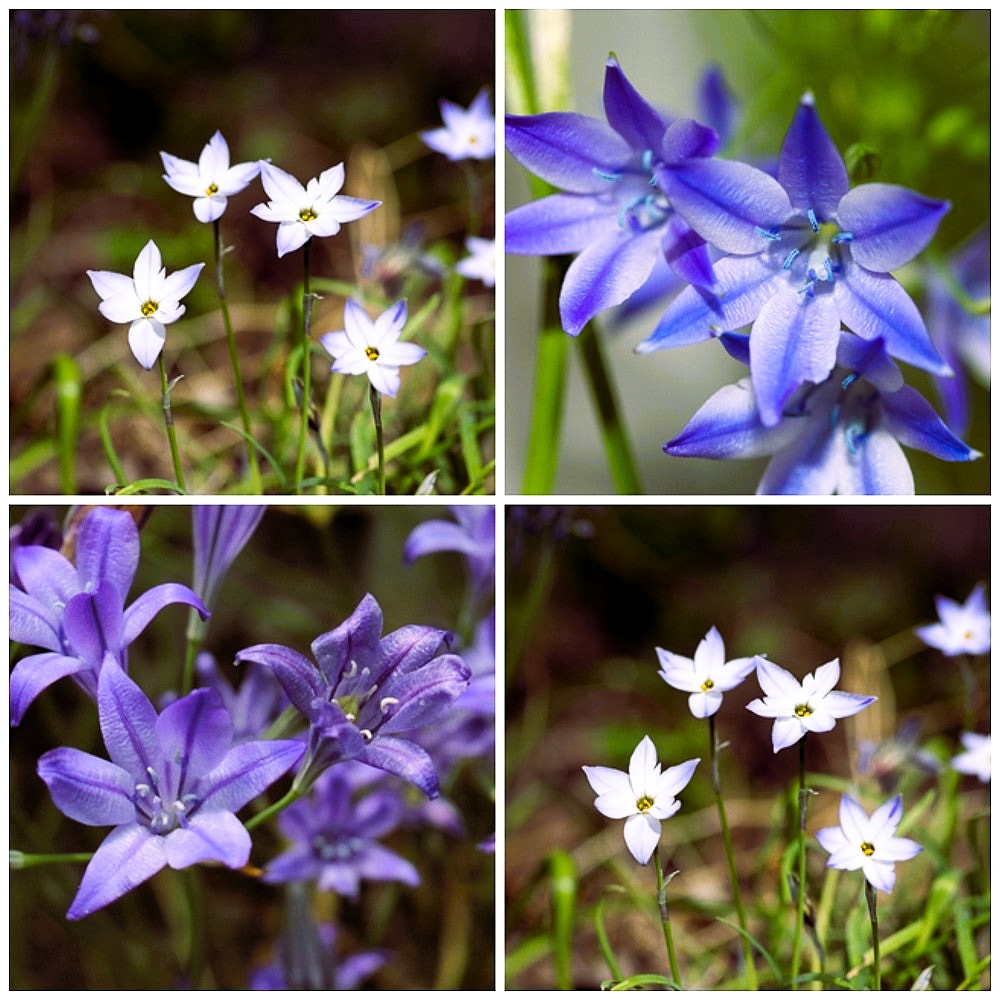Triteleia bulbs are beloved by gardeners for their vibrant, starry flowers and low-maintenance growth habits. Native to western North America, these bulbs belong to the Asparagaceae family and thrive in well-drained soils and sunny to partially shaded areas. If you’re curious about growing Triteleia and are wondering just how many plants a single bulb can produce, you’re in the right place. Let’s dive into the growth potential of Triteleia bulbs and explore how to maximize blooms for a stunning garden display.
Understanding Triteleia Bulbs: How They Grow and Multiply
Triteleia, often called triplet lilies or wild hyacinths, are geophytes, meaning they store nutrients in their bulbs. These nutrients support the plant’s growth and flowering each season. While a single Triteleia bulb starts as one plant, it can slowly multiply over time through offsets, eventually forming a small cluster of bulbs.
When you plant one Triteleia bulb, you’ll typically see just one flowering plant in the first season. The bulb focuses its energy on producing a healthy plant with blooms rather than multiplying immediately. However, in favorable conditions, it will develop offsets—smaller bulbs that grow off the main bulb. These offsets can be separated and replanted or left in the ground to grow into mature flowering plants in a few years.
Growth Timeline: When to Expect Multiple Plants
- First Season (Year 1): One bulb typically produces one flowering stem with several delicate blooms. No additional plants or bulbs appear at this stage, as the main bulb is establishing itself.
- Second to Third Season (Years 2-3): The bulb may begin to develop small offsets. You may notice additional leaf growth, but it’s unlikely to have extra blooms at this point. The offsets are still immature and won’t produce flowers until they’ve grown to a sufficient size.
- Fourth to Fifth Season (Years 4-5): By now, the offsets will have matured, and you could see multiple flowering stems emerging from the area where the initial bulb was planted. This is when you’ll start to notice more blooms without needing to plant additional bulbs.
- Beyond Five Years: Once established, Triteleia bulbs continue to produce offsets each year, gradually creating a clump of plants that will provide a beautiful display of flowers. This natural clumping process is slow but steady, and a single bulb can eventually lead to a larger group of plants over time.
Tips for Encouraging Bulb Multiplication
While Triteleia bulbs don’t multiply as quickly as some other bulbs, you can encourage them to produce more offsets with a few helpful strategies:
- Optimal Soil Conditions: Triteleia prefers well-drained, sandy or loamy soils. Avoid heavy clay soils that can retain moisture and cause bulb rot. In loose, airy soil, bulbs can grow more freely and produce healthier offsets.
- Proper Spacing: Give each Triteleia bulb adequate space when planting, generally about 4 inches apart. This allows room for the offsets to grow and establish themselves without crowding.
- Fertilize Moderately: Bulbs benefit from low-nitrogen, slow-release fertilizer applied in early spring when shoots first emerge. Too much nitrogen can encourage foliage growth at the expense of flowers and offsets.
- Sunlight: Triteleia plants thrive in full sun, although they can tolerate partial shade. A bright location promotes strong, healthy plants and can help speed up the multiplication process.
- Avoid Disturbing Bulbs: Triteleia bulbs do best when left in the ground undisturbed. Frequent digging or transplanting can hinder their natural growth cycle and offset production. If you need to move them, wait until the dormant season after the foliage has died back.
Planting Triteleia: Step-by-Step Guide
To make the most of a single Triteleia bulb, start with proper planting techniques to ensure it has the best chance of thriving and multiplying over time. Here’s a step-by-step guide:
- Choose a Location: Select a sunny, well-draining spot in your garden. Triteleia is suitable for rock gardens, borders, and even containers as long as the drainage is excellent.
- Prepare the Soil: Loosen the soil to a depth of about 8-10 inches, and mix in a bit of sand or compost if needed for better drainage. This will help the bulbs settle in and promote healthy growth.
- Planting Depth: Plant each bulb about 4 inches deep with the pointed end facing up. Cover with soil and press down gently to secure it.
- Watering: Water the area lightly after planting, but avoid overwatering. Once established, Triteleia is drought-tolerant and generally only needs occasional watering.
- Mulching: Apply a thin layer of mulch to help retain moisture and regulate soil temperature, but keep it minimal to prevent excessive moisture near the bulbs.
By planting in fall, Triteleia bulbs will establish roots over winter and begin growing in spring, ready to produce blooms by early summer.
How to Divide Triteleia Bulbs for More Plants
As your Triteleia bulbs mature and produce offsets, you may want to divide and replant them to encourage further spread in your garden. Dividing bulbs is a straightforward process that, when done correctly, can lead to more flowering plants.
- When to Divide: The best time to divide Triteleia bulbs is during the dormant period, typically in late summer or early fall, once the foliage has completely died back.
- Dig Carefully: Use a garden fork or spade to gently lift the clump of bulbs out of the soil. Be careful not to damage the bulbs or offsets during this process.
- Separate the Offsets: Carefully break off the small offsets from the main bulb. Each offset should have a bit of root attached to increase its chances of successful replanting.
- Replanting: Plant each offset at the same depth as the original bulb—about 4 inches deep. Space them around 4 inches apart to allow room for future growth.
- Water and Mulch: After replanting, water the area lightly and apply a thin layer of mulch. This will help the offsets establish themselves in their new location.
With each division cycle, you’re effectively multiplying the number of Triteleia plants in your garden, turning that initial single bulb into a small, flourishing patch over time.
Factors That Impact Triteleia Bulb Growth and Multiplication
Several factors influence the growth rate and multiplication potential of Triteleia bulbs. Let’s explore some key aspects that can impact how quickly and successfully these bulbs spread.
- Climate: Triteleia is adapted to Mediterranean climates with mild, wet winters and hot, dry summers. In regions with extreme cold, bulbs may need extra protection, or you might consider growing them in pots to move indoors during harsh winters.
- Pest and Disease Control: While relatively pest-resistant, Triteleia bulbs can occasionally suffer from bulb rot in overly wet conditions. Ensure good soil drainage and avoid overwatering to prevent this.
- Pollination and Seed Production: Triteleia plants can produce seeds if pollinated, and these seeds can be used to grow new plants. However, growing Triteleia from seed takes longer than from bulbs, often several years before flowering. Bulb division is generally faster for increasing your plant numbers.
- Seasonal Maintenance: Triteleia requires minimal maintenance, but removing spent flowers and allowing the foliage to die back naturally helps the bulb conserve energy for the next growing season. This, in turn, supports future offset production.
Alternative Ways to Expand Your Triteleia Display
If you want to achieve a larger display of Triteleia without waiting for offsets to mature, consider a few additional strategies:
- Companion Planting: Triteleia’s delicate blue and purple blooms pair well with other bulbs like alliums, daffodils, or tulips. By planting these together, you can create a more immediate effect without needing to rely on offsets.
- Succession Planting: By planting multiple Triteleia bulbs in a staggered pattern, you can create a more continuous blooming season. This approach won’t increase the number of plants from a single bulb but can give the impression of a more extensive display.
- Container Growing: Triteleia grows well in pots, making it easy to move them to new garden areas as needed. This is also a great solution if you live in an area with unsuitable climate conditions, as you can control the environment more easily in a container setting.
Wrapping Up: Maximizing Your Triteleia Bulb’s Potential
In summary, while a single Triteleia bulb initially produces one plant, with time and proper care, it can generate multiple flowering plants through offset production. While this process is gradual, patience and optimal growing conditions will reward you with a natural spread of these charming, star-shaped flowers.
By following best practices in planting, soil preparation, and seasonal care, you can enjoy an ever-growing patch of Triteleia that fills your garden with vibrant color each year. And if you’re eager to speed up the process, consider adding a few additional bulbs or experimenting with companion planting to create an immediate impact while waiting for those natural offsets to mature.
With a little patience and dedication, you’ll soon witness how a single Triteleia bulb can evolve into a small garden oasis, rewarding you with more blooms and plants season after season.
Get Your Video Guide About How Many Plants From One Triteleia Bulb

